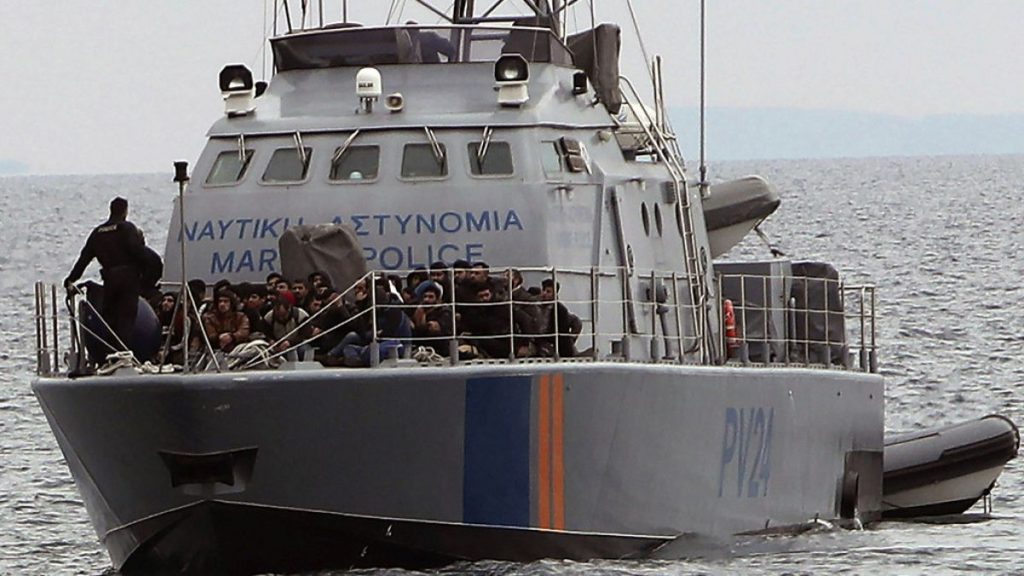The Fall in Migrant Arrivals in Cyprus: A Complex Issue
In recent years, Cyprus has seen a dramatic drop in the number of migrants arriving on its shores. This shift is largely attributed to the stringent measures introduced by the Cypriot government to curb irregular migration. According to official data, migrant arrivals decreased from 17,278 in 2022 to 6,102 in 2024, while asylum applications plummeted from a record 21,565 to 6,769 during the same period. These measures, which include increased border controls, stricter asylum processing, and repatriation efforts, have significantly impacted the influx of migrants, particularly from conflict-ridden regions like Syria. However, while the government has managed to reduce the number of arrivals, the issue of migration remains a deeply complex and sensitive topic, with far-reaching humanitarian and legal implications.
A Tragic Maritime Incident: Accountability and Consequences
One of the most harrowing cases to emerge from the ongoing migrant crisis in Cyprus involved the death of a 3-year-old Syrian girl aboard an overcrowded migrant boat. The vessel, which set sail from Lebanon in January 2024, was carrying 60 Syrian migrants, including the young girl and her mother. The boat was poorly equipped, lacking essential navigational aids and communication tools, and its engine failed just days into the journey, leaving it adrift in the eastern Mediterranean for nearly a week. As the situation grew dire, passengers resorted to drinking seawater and their own urine to survive. The 48-year-old Syrian captain, who was later jailed for three years by a Cypriot court, had allegedly instructed passengers to discard remaining water bottles to conceal the boat’s origin. This decision exacerbated the already dire conditions, leading to the dehydration-related death of the young girl. Despite efforts by Cypriot authorities to airlift the child to a hospital, she could not be saved. The case underscores the tragic consequences of unsafe and unregulated migration, as well as the need for accountability for those responsible for endangering lives.
The Strain on Cyprus’s asylum System
The reduction in migrant arrivals has provided some relief to Cyprus’s overwhelmed asylum system. However, the challenges posed by the influx of migrants in previous years remain significant. Cyprus, an EU member state, has struggled to accommodate the thousands of asylum seekers who arrived on its shores, many fleeing war-torn countries like Syria. The government has argued that the small island nation lacks the resources and infrastructure to host such large numbers of migrants, leading to the introduction of stricter policies. These policies have included halting the processing of asylum applications, increasing repatriations, and implementing measures to deter irregular migration. While these actions have contributed to the decline in arrivals, they have also drawn criticism from human rights organizations, who argue that such measures may violate international law and the rights of asylum seekers.
The Exodus of Syrian Migrants: Changing Trends
In the wake of the ousting of Syrian President Bashar al-Assad in December 2023, a new trend has emerged in Cyprus: an increasing number of Syrian nationals are choosing to return to their homeland. According to Deputy Migration Minister Nicholas Ioannides, an average of 40 Syrians per day are now requesting to either withdraw their asylum applications or revoke their international protection status. Since the start of this trend, approximately 755 Syrians have already returned to Syria. This shift reflects a combination of factors, including the deteriorating living conditions for migrants in Cyprus, the perception that the conflict in Syria may be stabilizing, and the introduction of policies that make it more difficult for migrants to remain on the island. However, human rights groups have raised concerns about the safety of those returning to Syria, where the legacy of war and ongoing instability continues to pose significant risks to returnees.
The Unique Position of Cyprus in the Migration Crisis
Cyprus’s geographical proximity to the Middle East makes it a critical entry point for migrants seeking to reach Europe. Unlike other EU member states, Cyprus is located closer to countries like Syria and Lebanon, making it a natural destination for those fleeing conflict. However, the island’s unique political landscape—particularly the division between the internationally recognized Republic of Cyprus and the breakaway Turkish Cypriot north—has further complicated the issue of migration. Many migrants arrive through the Turkish Cypriot north, where the Cypriot government has little jurisdiction, making it challenging to enforce migration policies and ensure the safety of those arriving. This division has also led to tensions between the two communities, as well as between Cyprus and its EU partners, over how to address the migration crisis effectively.
The Humanitarian and Legal Dilemmas Ahead
The migration crisis in Cyprus highlights the delicate balance between national security, humanitarian obligations, and legal responsibilities. While the Cypriot government has taken steps to reduce the number of arrivals and manage the asylum process, the human cost of these measures has been significant. The European Court of Human Rights has already ruled against Cyprus in a case involving the return of Syrian migrants, emphasizing the need for the country to uphold its obligations under international law. As migration continues to shape the region, Cyprus—and the EU as a whole—must navigate these challenges with a focus on both security and compassion. The stories of migrants like the young Syrian girl who lost her life at sea serve as a stark reminder of the stakes involved and the urgent need for sustainable, humane solutions to this complex issue.












